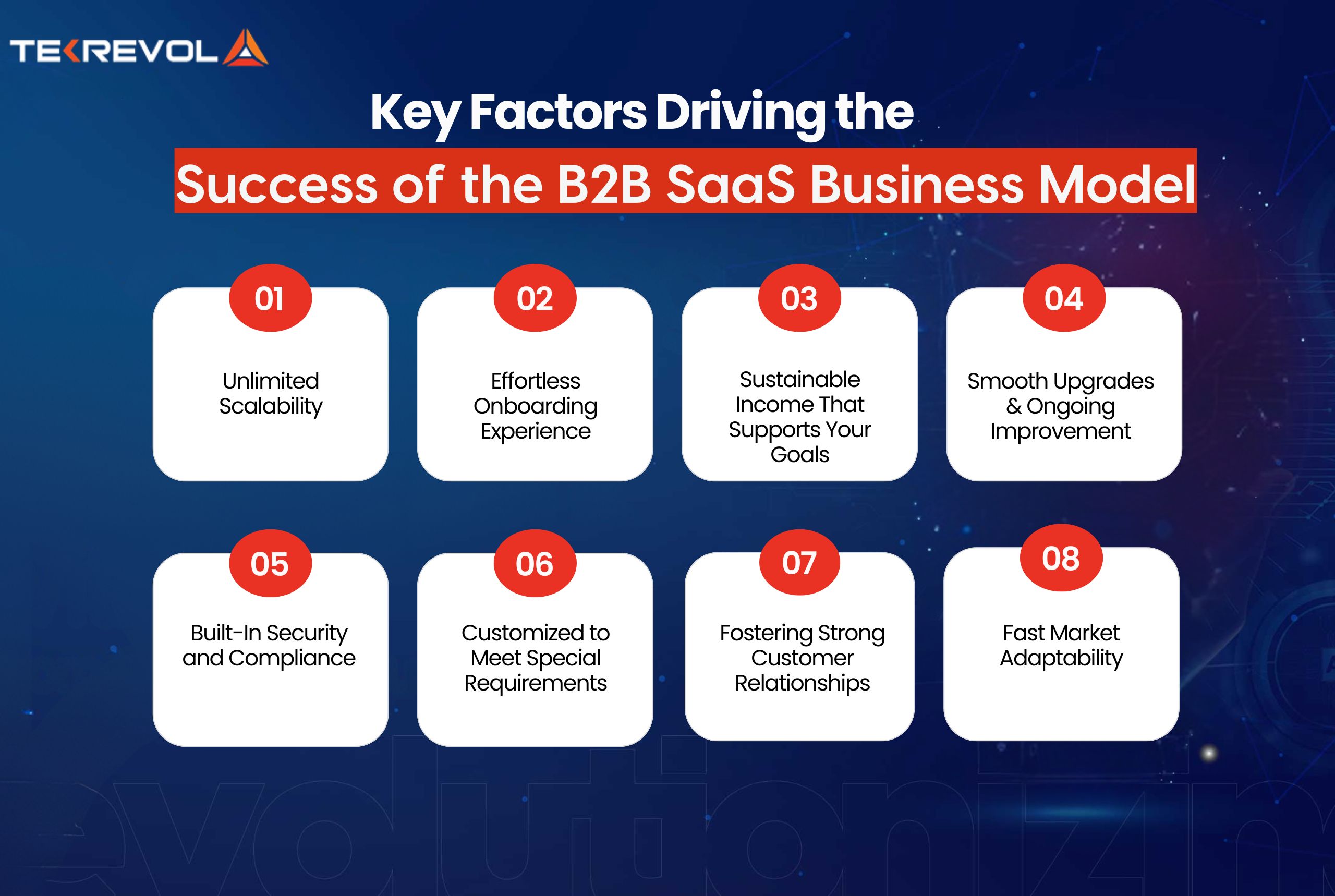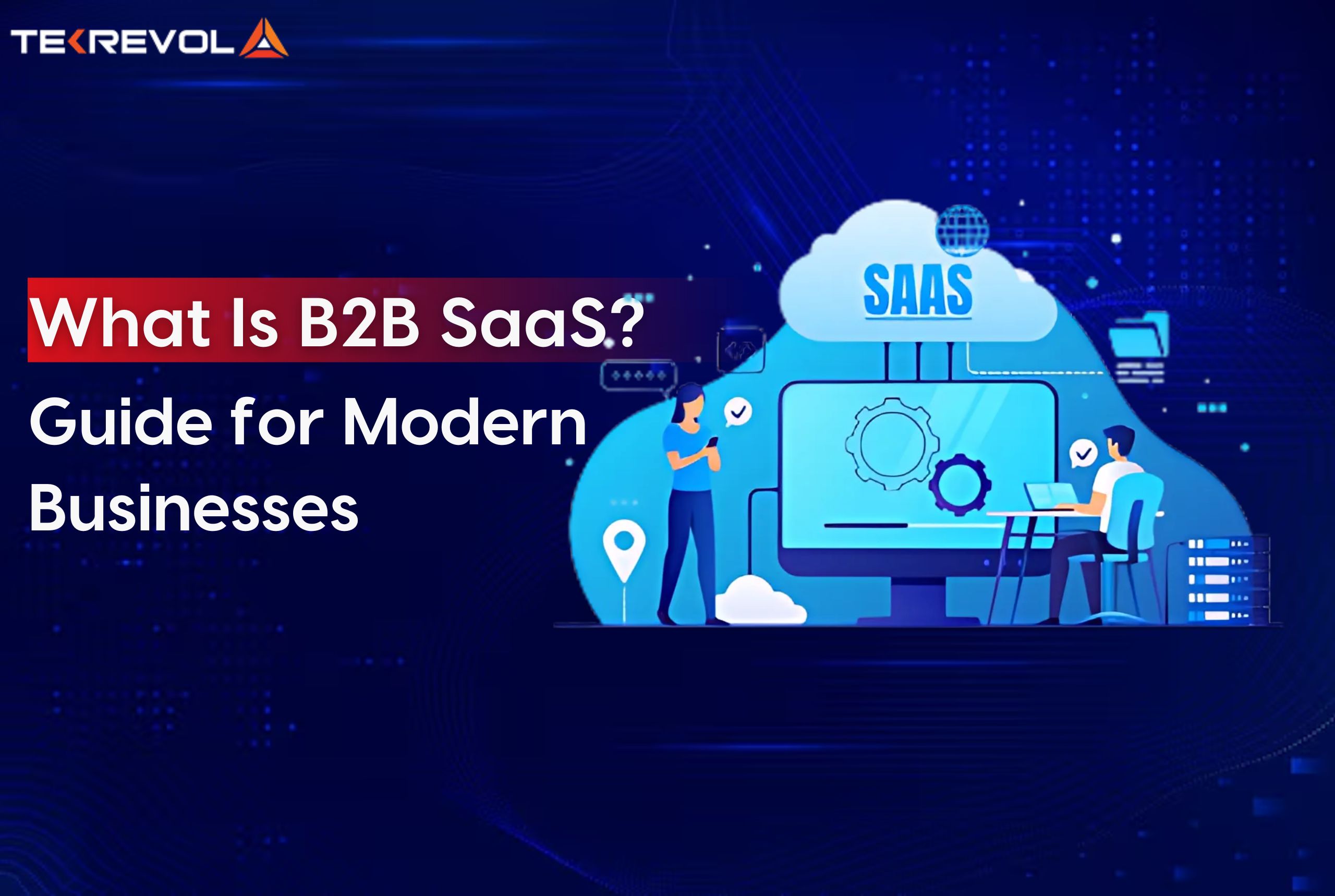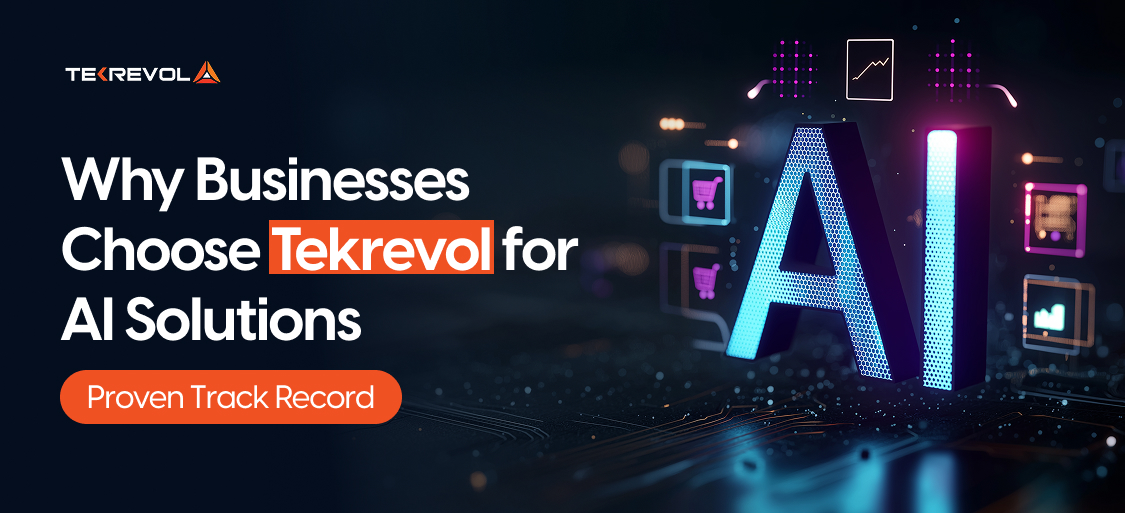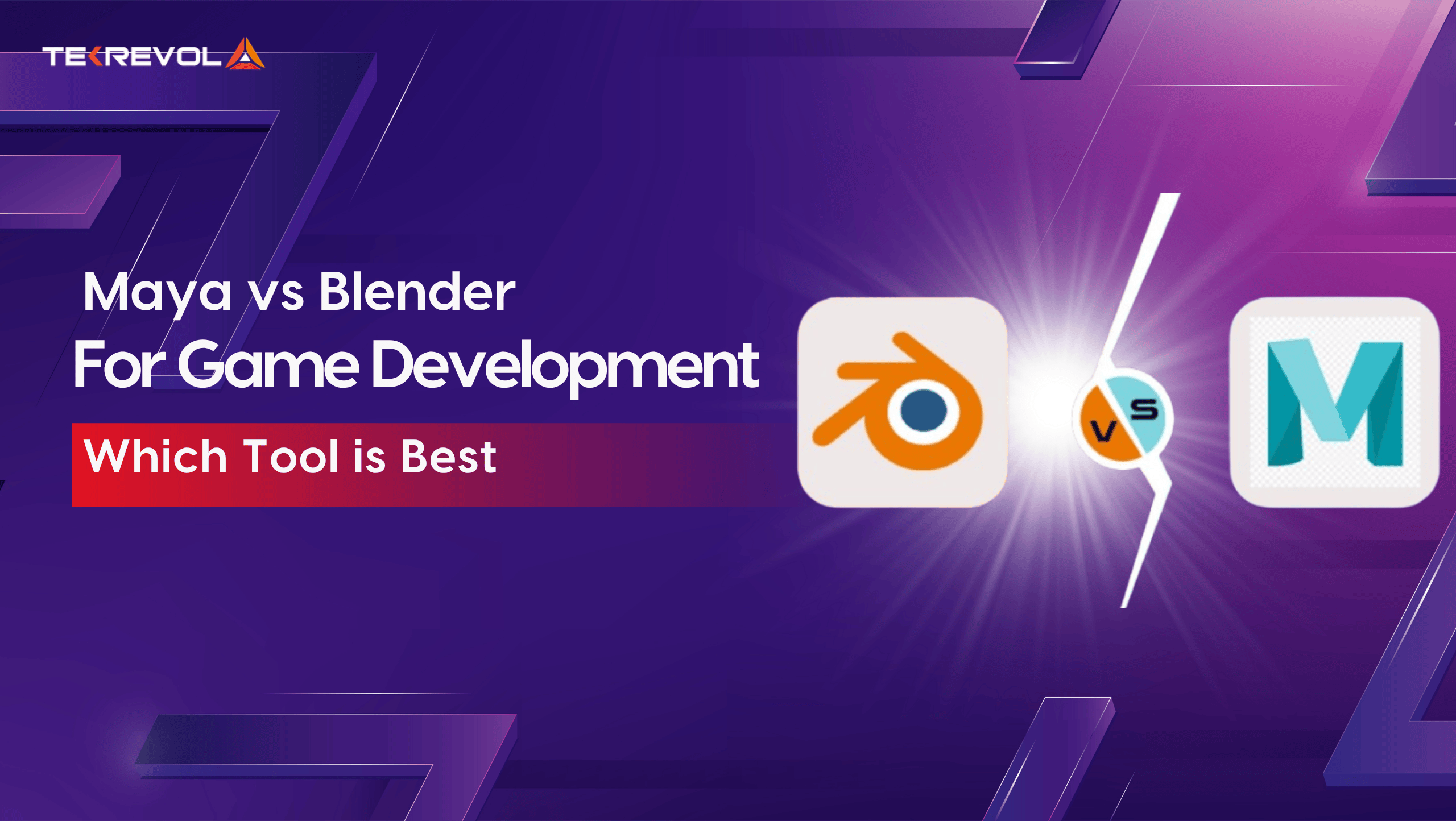You might have wondered how some businesses run smoothly without bulky software, constant updates, or expensive IT services. Welcome to the exciting world of B2B SaaS!
A quiet revolution is being driven across businesses by B2B SaaS platforms.
You get up, open your laptop, and easily manage leads, monitor results, and collaborate with your team, all without the need for complex coding or heavy software. That’s how B2B SaaS is keeping businesses thriving today.
Many organizations today rely on cloud-based software-as-a-service for their daily operations. These tools simplify internal processes, improve customer communication, and automate key business functions.
So, what is B2B SaaS, and how has it changed the way modern businesses operate? If you have the same questions in your mind, then this guide is just for you. We will explain everything from how it shapes business operations to the role that expertly selected tools can have in boosting your company’s growth.
What is B2B SaaS?
The fast growth of cloud software has many people hooked on the question, “What is B2B SaaS?
B2B SaaS is a platform that provides access to cloud-based software designed for businesses to solve different challenges, such as those with customers, finances or staff teamwork.
On the other hand, rather than having to support and set up software themselves, users of B2B SaaS turn to the web and allow the provider to manage the service.
- Flexible Pricing Models: Instead of purchasing expensive software licenses, businesses often pay via subscription or usage-based plans, making budgeting easier and predictable.
- Anywhere Access: Everything is stored in the cloud, allowing teams to work from any location on any device. This flexibility shows why many companies combine mobile app development with SaaS solutions for smoother collaboration.
- Automatic Updates: Providers continuously improve the software, keeping it aligned with the latest tech and security standards without extra effort from users.
- Scalability and Customization: Organizations can scale up or down as needed, while customizing software for their unique needs.
- Shared Infrastructure: Many businesses share the same cloud system, which helps things run smoothly and keeps costs low.
- Security and Compliance: Top providers protect data with encryption, access controls, and compliance with industry standards, giving companies confidence in their digital operations.
As the global SaaS market is about to hit $1.25 trillion by 2034, expanding at a CAGR of 13.32% from 2025 to 2034, it’s clear that B2B SaaS is not just a passing trend but a huge shift in how businesses operate.
- Looking for software that grows with your business?
- TekRevol offers flexible SaaS subscriptions that adapt to your needs.
Key Factors Driving the Success of the B2B SaaS Business Model

All businesses desire software that will grow with them effortlessly, economically, and without disrupting the business. B2B SaaS addresses this need by combining state-of-the-art technology with flexible delivery models, providing businesses with a clear competitive edge.
Below are the principal reasons why the B2B SaaS business model continues to succeed:
1. Unlimited Scalability
Scaling a conventional software company can be time-consuming and expensive. With B2B SaaS:
- Cloud infrastructure can support many users at once.
- No need for physical changes or large IT resources.
- New customers can be added quickly, tens to hundreds.
- Spending is mostly flat, even with increased users.
This scalability with ease is a significant force behind rapid growth and customer adoption.
2. Effortless Onboarding Experience
Beginning with SaaS software is meant to be frictionless:
- No installs or complex configurations for users.
- Natural interfaces reduce training time.
- Instant access via the web allows teams to get started in minutes.
- Constant support via tutorials, webinars, and support staff enhances adoption.
By eliminating technical hurdles, B2B SaaS businesses ensure customers realize value quickly.
3. Sustainable Income That Supports Your Goals
Financial planning is simpler with SaaS because:
- Customers pay predictable subscription rates (monthly or annually).
- This recurring revenue flattens cash flow and eliminates uncertainty.
- Lower running costs than on-premise software boost profitability.
- Pricing flexibility for different customer segments drives diverse customer bases.
- High retention rates result in revenue streams remaining stable long-term.
Such financial solidity makes SaaS companies attractive to founders and investors.
4. Smooth Upgrades & Ongoing Improvement
As opposed to conventional software, in which updates interfere with processes:
- SaaS upgrades occur silently in the background.
- Customers always access the most recent features and security patches.
- Manual downloads and IT help are not required.
- Regular deployment cycles facilitate quicker innovation and customer feedback responsiveness.
The model maintains that SaaS solutions stay future-proof and competitive.
5. Built-In Security and Compliance
Trust is essential when dealing with business information. SaaS vendors bring peace of mind by:
- Using sophisticated encryption and access controls.
- Following legislations and regulations like GDPR and HIPAA.
- Conducting regular security scans and vulnerability testing.
- Providing multi-factor authentication and single sign-on.
This multi-layered security model instills trust with enterprise clients.
6. Customized to Meet Special Requirements
One-size-fits-all never applies to business. SaaS platforms enable users by offering:
- Customizable dashboards and workflows.
- Modular add-ons to add functionality.
- Branding options to preserve corporate identity.
- API access to integrate with legacy systems.
Customization allows companies to customize software to precise needs.
7. Fostering Strong Customer Relationships
Subscription models promote long-term relationships because:
- Providers are incentivized to make customers happy and active.
- Ongoing support resolves issues promptly.
- Regular feature updates keep users engaged.
- Community forums and user groups promote collaboration and loyalty.
Strong customer orientation drives retention and business longevity.
8. Fast Market Adaptability
The dynamic nature of the business world requires rapid reaction. B2B SaaS platforms facilitate:
- Rapid deployment of new features, keeping up with market directions.
- Easy shifting of product emphasis based on customer comments.
- Flexibility to accommodate changing regulations and business processes.
- Less downtime during transitions, maintaining operations seamless.
This ability to adapt makes businesses competitive in rapidly evolving markets.
Understanding SaaS vs B2B SaaS highlights why these tools are uniquely created for businesses that need agility and growth without compromise.
What is B2B SaaS in Action? Tools and Practical Examples
With so many businesses moving to the cloud, it’s worth asking: what is B2B SaaS, and which tools actually make a difference?
Today’s companies are dependent upon a varied set of B2B SaaS applications that help automate processes, enhance productivity, and grow at scale.
Here are the major SaaS categories with their best examples and the special advantages they offer to businesses:
1. Customer Relationship Management (CRM) Software
Examples: Salesforce, Zoho CRM, HubSpot CRM
CRMs will help companies manage their clients’ interactions, sales pipelines, and support requests in one system. These applications let teams provide personalized service and monitor performance to generate leads and relationships with customers, and retention.
Best For: Sales teams, marketing departments, and support entities determined to build improved customer relationships and generate revenue.
2. Enterprise Resource Planning (ERP) Software
Examples: SAP, Oracle NetSuite, Microsoft Dynamics 365
ERP systems collect finance, HR, inventory, and purchasing across the organization and put them together into one system. Because it unchains and automates data, the organization is able to act on data that is up-to-date and correct.
Best for: Mid to large businesses that want to manage vital business functions from one place to improve their overall flexibility.
3. Project & Task Management Platforms
Examples: Asana, Trello, Monday.com, ClickUp
ERP systems take important functions like finance, HR, inventory, and purchasing and consolidate them into a single, centralized platform. It liberates data from silos and manual work, thus giving the organization the ability to make decisions that are based on real-time and accurate data.
Best For: Teams that want centralized management and easy coordination, making these platforms important for businesses exploring what is B2B SaaS in action.
4. Marketing Automation Platforms
Examples: HubSpot, Marketo, Mailchimp
They take care of typical marketing projects by managing email campaigns, looking after leads, and posting on various social sites. In addition, marketers can use the information they collect to know what strategies are working and which need adjustment.
Best For: Project teams, workforces that are not all in the same office, and agencies set on delivering their work on time and within budget.
5. Accounting & Financial Management Tools
Examples: QuickBooks, Xero, FreshBooks.
These systems take care of invoicing, budgeting, payroll, and expenses, so you don’t have to worry about it. By using dashboard tools and automation, companies manage their cash flow and make certain they comply with all the rules.
Best for: Firms of all sizes that wish to tune their finances closely without needing to hire many accounting staff.
6. Communication & Collaboration Tools
Examples: Slack, Microsoft Teams, Zoom
These tools help streamline your talks with colleagues and those with clients. Because workers can message each other, call over video and share files online, communication and collaboration happen efficiently.
Best for: Distributed teams and businesses that want to maintain clear, effective internal communications.
7. Customer Support & Helpdesk Platforms
Examples: Zendesk, Freshdesk, Intercom
They make it easier for customers by gathering tickets, live chat, and self-service in the same place. With automated and connected analytics, businesses can manage incidents faster and hold on to their customers.
Best for: Customer support teams seeking to increase support quality and responsiveness.
8. E-commerce & Subscription Management Tools
Examples: Shopify (for B2B e-commerce), Chargebee, Recurly
For B2B businesses that sell online or provide subscription-based offerings, these tools manage everything from payment processing to billing customers, making the purchase process smooth.
Best for: B2B stores and subscription businesses that want to automate sales and billing.
9. Data Analytics & BI Tools
Examples: Tableau, Looker, Power BI
You will better understand your business information by using reporting and visualisation tools. Combining multiple sources of data, these tools give you useful forecasting and improvement advice.
Best for: Business leaders and analysts using data to drive strategy, optimize operations, and better understand the value of B2B SaaS platforms.
Top Reasons Companies Are Switching to B2B SaaS Solutions
The SaaS market is booming worldwide. Statista estimates global SaaS revenue reached $280.19 billion in 2023 and is on track to increase to $793.10 billion by 2029.
Modern businesses can’t afford inefficiency. That’s why B2B SaaS platforms have evolved from optional tools to core growth enablers. Understanding SaaS vs B2B SaaS also highlights why this transition is gaining momentum.
Here’s a breakdown of the leading advantages driving this trend:
1. Cost-Effective from Day One
Traditional software forces businesses to invest heavily in licenses, infrastructure, and long-term maintenance. B2B SaaS platforms simplify this completely with:
- No expensive hardware.
- No unexpected upgrade charges.
- Pay-as-you-go pricing.
This simplifies budgeting and reduces the overall cost of ownership considerably. You’re only paying for what you consume, and increasing your usage doesn’t mean huge reinvestment.
2. Scaling with You
Another key strength of B2B SaaS is scalability. Whether you’re adding new users, expanding to new markets, or adding new features, SaaS platforms scale with your business.
- Instantly add or subtract users.
- Scale plans as required
- Eliminate downtime and disruption.
This adaptability shows the clear advantage of SaaS vs B2B SaaS.
3. Access Anytime, Anywhere
B2B SaaS platforms are cloud-enabled, so your teams can access them from any internet-connected device. This flexibility:
- Supports remote and hybrid teams
- Facilitates real-time collaboration across distances
- Keeps your operations humming, 24/7
As businesses become more mobile, SaaS ensures you can work from anywhere without limits.
4. No Maintenance Headaches
No more worrying about system upgrades or fixing bugs. All updates, patches, and maintenance are taken care of automatically by SaaS providers. That means:
- You’re always working with the most recent version
- Security risks are rapidly resolved
- In-house IT staff can concentrate on strategy, not maintenance
It’s a hands-off experience that offers more uptime and fewer distractions.
5. Smooth Integration with Other Tools
Top B2B SaaS platforms are designed to integrate with your current stack.
- Connect with CRM, ERP solutions, marketing software, and more
- Automate workflows
- Break down data silos
This leads to improved efficiency and data consistency between departments.
6. Enterprise-Class Security
Good SaaS vendors spend on robust security mechanisms.
- Data encryption
- Adherence to global standards (GDPR, HIPAA, etc.)
- Access control and frequent auditing
You have peace of mind with your data being secured.
7. Speed of Value
Unlike legacy software that may take months to roll out, SaaS offerings are ready to deploy in days or weeks.
- Limited setup time
- Integrated onboarding and guides
- Quicker return on investment
This puts you ahead of the curve in addressing issues and driving outcomes.
8. Integrated Collaboration Capabilities
Most B2B SaaS platforms are designed for smooth teamwork from day one.
- Shared dashboards
- Commenting, tagging, and file sharing
- Real-time updates
These capabilities enhance visibility and keep everyone on the same page.
9. Better Data Insights and Reporting
SaaS applications usually have sophisticated analytics dashboards.
- Visualize KPIs in real-time.
- Track performance trends
- Make data-backed decisions
Access to meaningful insights assists in delivering a better strategy.
10. Enhanced Customer Experience
From CRM solutions to helpdesk software, SaaS applications assist companies in providing improved service.
- Faster response times
- Personalized customer interactions
- Omnichannel support
This results in increased satisfaction and long-term loyalty.
- Thinking about upgrading your business software?
- We help companies implement scalable, secure software that drives growth.
Understanding the Challenges of B2B SaaS: What Businesses Need to Know
B2B SaaS platforms offer many benefits, including scale, cost savings, and flexibility, but they also have issues to address. The main problems companies face during the SaaS implementation, and why thinking ahead helps, are detailed below.

1. Data Security and Privacy Threats
When companies use the cloud, secure handling of business-sensitive data is always a top priority.
Cloud-hosted services can encounter cybersecurity threats such as data breaches, phishing, and ransomware.
- Companies in finance and healthcare have to meet regulations like GDPR and HIPAA with strict discipline.
- Organisations should look at a vendor’s way of encrypting data, their available certifications, and what they do in case of an incident.
Tip: Opt for providers that have enterprise-level security, continuous audits, and open data governance policies.
2. Limited Customization for Complex Needs
SaaS platforms are created to cater to a general population of users, and sometimes that comes with limited flexibility.
- If your company needs custom workflows or extensive system integrations, off-the-shelf SaaS may not provide the best fit for you.
- Custom development choices may be limited or expensive.
- Although there are configuration possibilities, they might not provide the same degree of customization as in self-hosted or custom-built solutions.
Tip: Focus on SaaS tools with open APIs or integration capabilities with your current tech stack in order to expand functionality.
3. Dependency on a Reliable Internet Connection
As SaaS solutions are web-based, they need access to the internet to function.
- Inconsistent connectivity or bad connectivity can hinder business operations, especially in developing or rural regions.
- Scheduled downtimes or service interruptions from the vendor may limit access temporarily.
- Without offline access or backup facilities, teams can experience productivity delays.
Tip: Check that SaaS products have offline modes or local syncing. Think about redundancy in internet services to reduce downtime risk.
4. Vendor Lock-In Risks
Shifting between SaaS vendors isn’t always smooth.
- Proprietary formats or data migration constraints can complicate change.
- Restrictive exit terms or high switching charges may be included in some contracts.
- Companies might find themselves trapped by a vendor whose rate of innovation doesn’t meet their requirements.
Tip: Prior to signing, look at service level agreements (SLAs), examine export possibilities, and see how flexible you can be if necessary.
- Worried about the risks of switching to SaaS?
- TekRevol helps you navigate challenges with secure, reliable implementation.
5 Things to Check Before Investing in a B2B SaaS Tool
After understanding what is B2B SaaS, and with the sheer volume of possibilities available, how do you select the one that’s best for your business? Here’s a step-by-step guide to assist in making the best decision.
1. Determine What You Actually Need
Don’t start researching possibilities without first being clear about business goals and pains.
- What problems do you need to solve?
- Which groups will be utilizing the software?
- What are your nice-to-have vs. must-have features?
Tip: Make a checklist and engage stakeholders early to include more needs.
2. Compare Features That Matter
Ignore the flashy sales talk. What matters are the features that make your daily work easier.
- Does it automate essential tasks?
- Can it grow with your business?
- Does the user interface facilitate productivity?
Pro tip: Ask for a demo or free trial; hands-on experience with a tool can expose more than just specs.
3. Ensure Integration Compatibility
An excellent SaaS solution should integrate with your existing technology stack, not replace it.
- Will it integrate with your CRM, accounting software, or email service?
- Does it have APIs or native integrations?
Pro tip: List out your existing tools and ensure compatibility with the SaaS vendor’s support.
4. Break Down Pricing
Look beyond the monthly cost of subscription. Calculate long-term expenses and upgrade paths.
- Are there upfront fees or surprise charges?
- How do you add users or require additional features?
- Is there a free option or flexible billing?
Tip: Select a provider with easy-to-understand pricing and scalable plans that expand with your team.
5. Assess Support & Uptime
A good product is only as strong as its customer support.
- Is live support accessible throughout your working hours?
- What is their typical response time?
- What does the SLA (Service Level Agreement) assure?
Tip: Check out reviews and forums for real feedback from current users.
Major Trends Driving the Evolution of B2B SaaS Solutions
Below are the standout trends redefining how organizations adopt and benefit from SaaS platforms.
1. Smarter SaaS with AI and Machine Learning
Artificial Intelligence (AI) and Machine Learning (ML) are no longer buzzwords; they’re being integrated deeply into SaaS platforms to provide real-time insights, automation, and smart decision-making assistance.
Example: Guru leverages AI to bring verified, contextually appropriate knowledge to the surface within workflows, saving time and increasing accuracy in day-to-day operations.
2. Industry-Specific (Vertical) SaaS On the Rise
Instead of applying generic platforms, companies are adopting SaaS applications that specialize in their own industry requirements. Vertical SaaS offers functionalities closely fitted to sector-specific workflows, regulatory compliance, and customer needs.
Example: Veeva Systems provides cloud solutions specifically designed for the life sciences industry, with built-in regulatory compliance and operating efficiency.
3. Mobility and On-the-Go Productivity
Today’s B2B SaaS platforms are becoming more mobile-centric, allowing teams to remain productive anywhere. With seamless cross-platform app functionality, companies are no longer tied to the office.
Example: Microsoft Office 365 provides an entire set of mobile software for document creation, editing, and sharing, enabling remote collaboration.
4. Placing User Experience and Interface Design First
Most SaaS platforms put the needs of the end user first. Clear and easy-to-use designs, along with smooth sign-up processes, help increase user adoption and make them happy.
For example, Slack is used a lot because its clear and responsive interface encourages easy and quick team collaboration.
5. Low-Code and No-Code SaaS Platforms
Using low-code and no-code platforms, companies help their users create processes without much tech knowledge. This helps to make innovation and digital change happen quickly.
Example: Airtable and Zapier allow teams to automate tasks, develop apps, or unite systems, all without any need for coding.
6. Increased Security and Compliance Capabilities
B2B SaaS firms are improving their security functions as cyberattacks increase and new data laws appear. Now, organisations select SaaS solutions that support compliance regulations (such as GDPR or HIPAA) and feature encryption, access measures, and audit features.
Example: Okta offers secure identity and access management, which is why it is the best fit for enterprises with a cybersecurity focus.
7. Integration-First Ecosystems
SaaS platforms now connect easily with your current tech stack, making operations smoother across ERPs, CRMs, and communication tools.
Example: Zapier integrates thousands of apps, enabling businesses to automate tasks and remove redundant work by connecting disparate systems.
Top B2B SaaS Providers Empowering Modern Businesses
Businesses today depend on cloud-based solutions for everything from collaboration and marketing to finance and design. B2B SaaS firms are enabling businesses of all sizes to work smarter, go faster, and grow more effectively.
Here’s a brief rundown of some top B2B SaaS players and what they do:
| Company | Focus Area | Key Offerings |
| Microsoft | Productivity & Cloud Services | Microsoft 365 (Teams, Word, Excel), Azure cloud services |
| HubSpot | Marketing & CRM | CRM, email marketing, automation, lead generation tools |
| Shopify | Ecommerce | Online store builder, product management, sales tracking, multi-channel sales |
| Adobe | Creative & Marketing Tools | Photoshop, Illustrator, Adobe Experience Cloud for marketing and analytics |
| Salesforce | Customer Relationship Management | Cloud-based CRM, sales automation, customer insights |
| Intuit | Accounting & Financial Tools | QuickBooks for accounting, TurboTax for taxes, payroll, and expense tools |
| MathWorks | Engineering & Scientific Computing | MATLAB and Simulink for simulations, algorithm design, and data analysis |
Partner with TekRevol for Scalable and Future-Ready B2B SaaS Solutions
Need a B2B SaaS product that boosts growth, enhances operations, and scales with your organization? We can make it happen at TekRevol. As a leading digital transformation company, we help create high-performing SaaS platforms that meet your distinct objectives.
You require a CRM, ERP, eCommerce backend, or an industry-focused SaaS product? Our professionals have just the right combination of strategy, design, and technical expertise to deliver.
Here’s what you receive when you collaborate with TekRevol:
- Custom-made SaaS solutions engineered for your business model
- Scalable architecture that prepares you for the future and grows with you
- Integration-friendly platforms that synergize with your ecosystem
- Exclusive product teams for long-term success and ongoing improvement
We collaborate with you throughout every phase, from ideation and wireframing through development, launch, and post-launch maintenance to guarantee your SaaS platform produces actual business value and competitive edge.
- Struggling to pick the best SaaS solution for your business?
- Partner with TekRevol for a tailored SaaS strategy and implementation.











